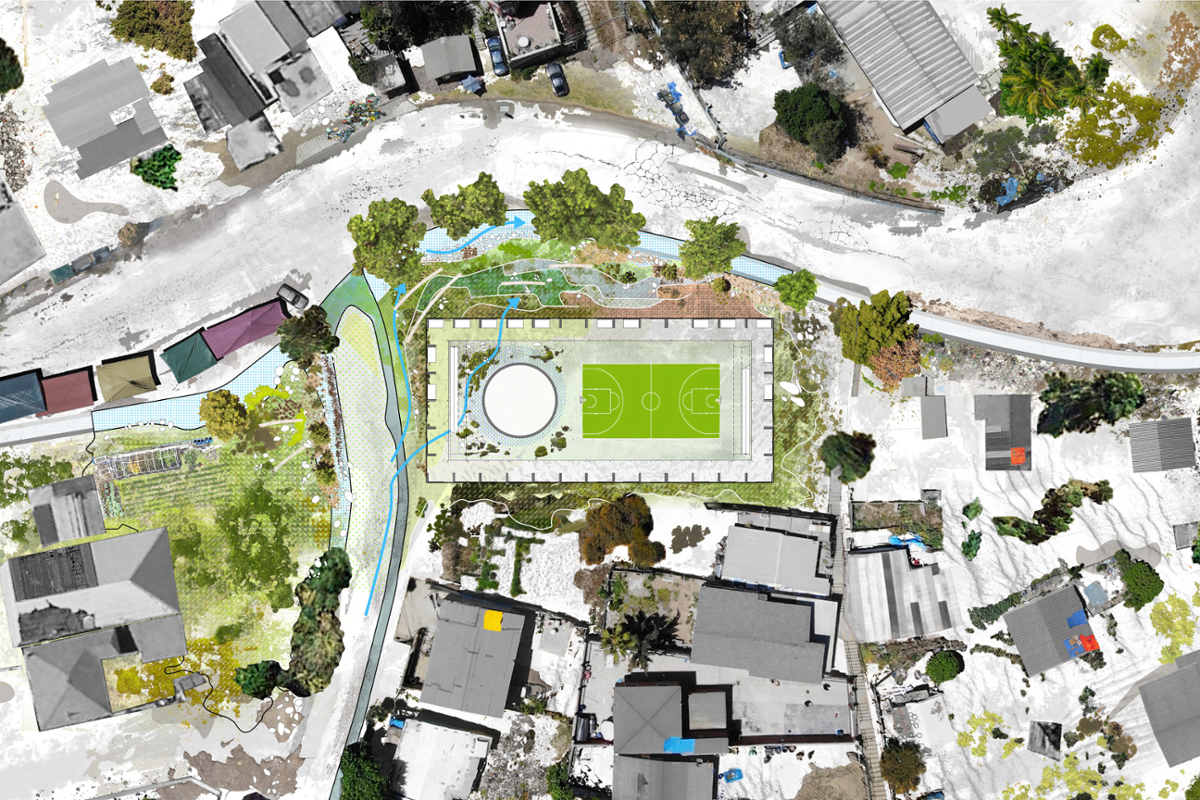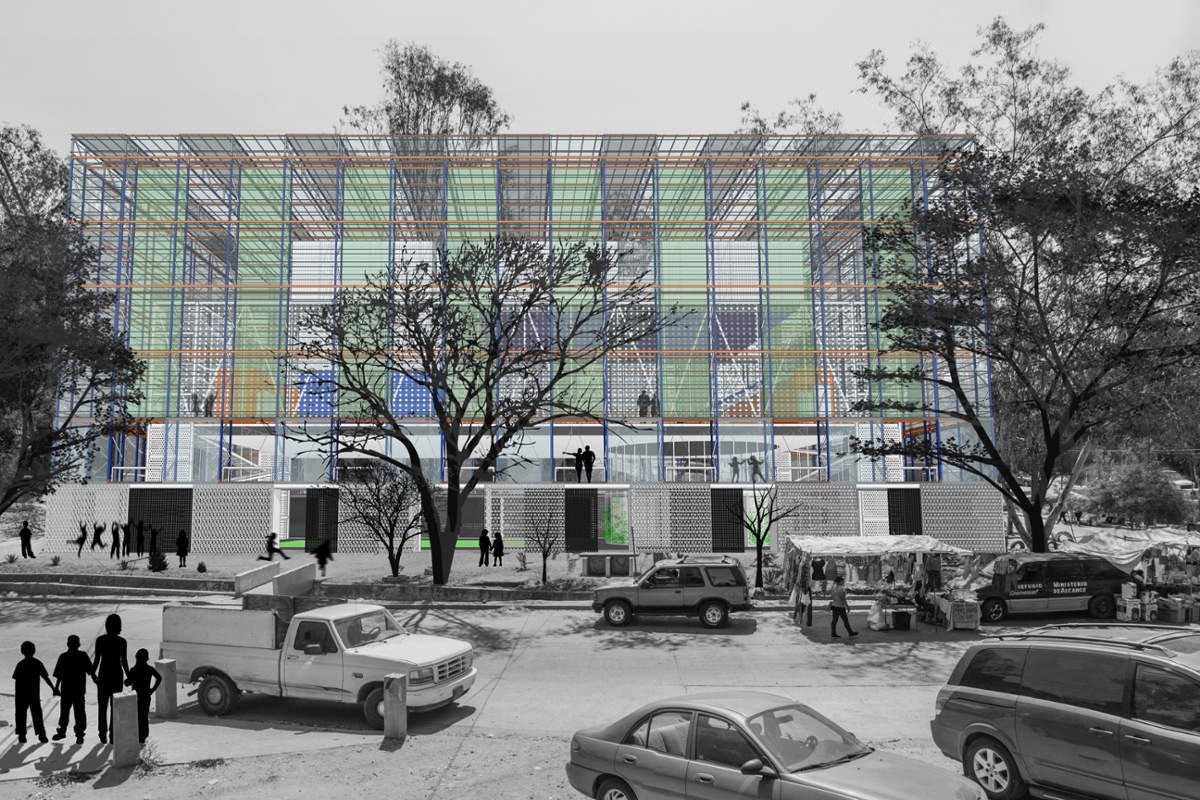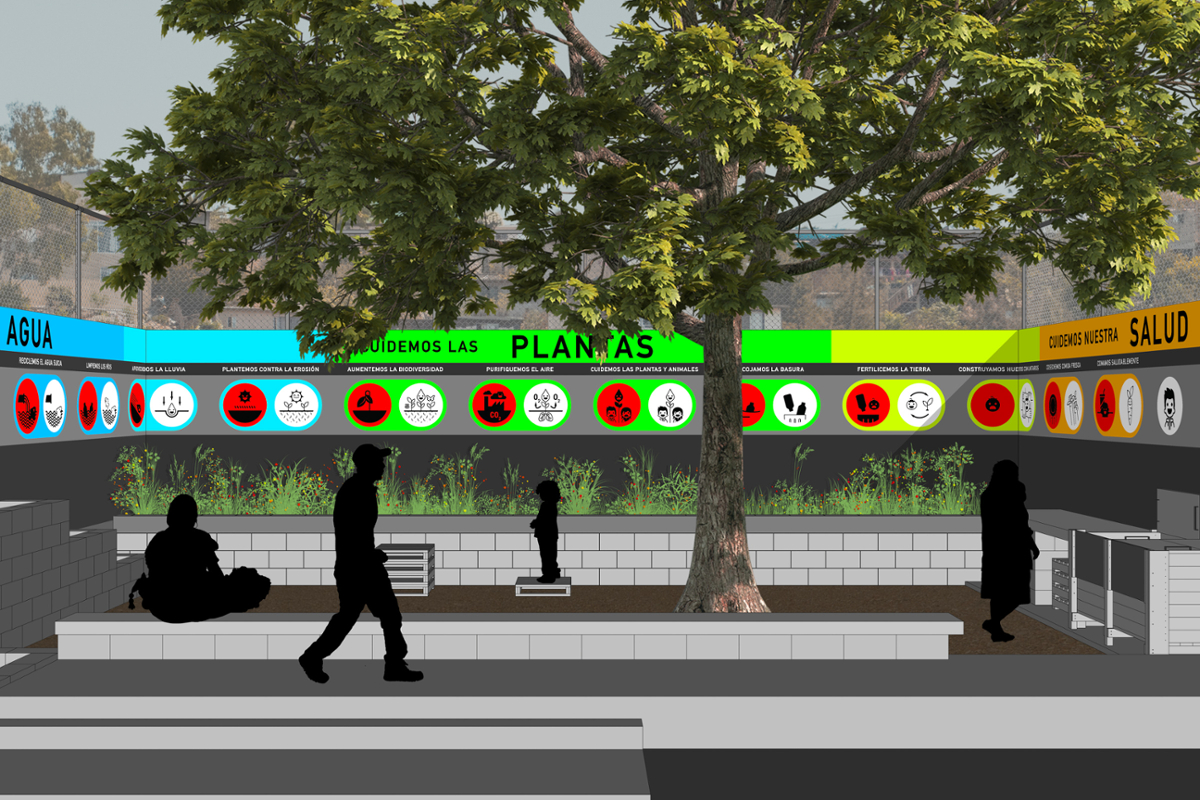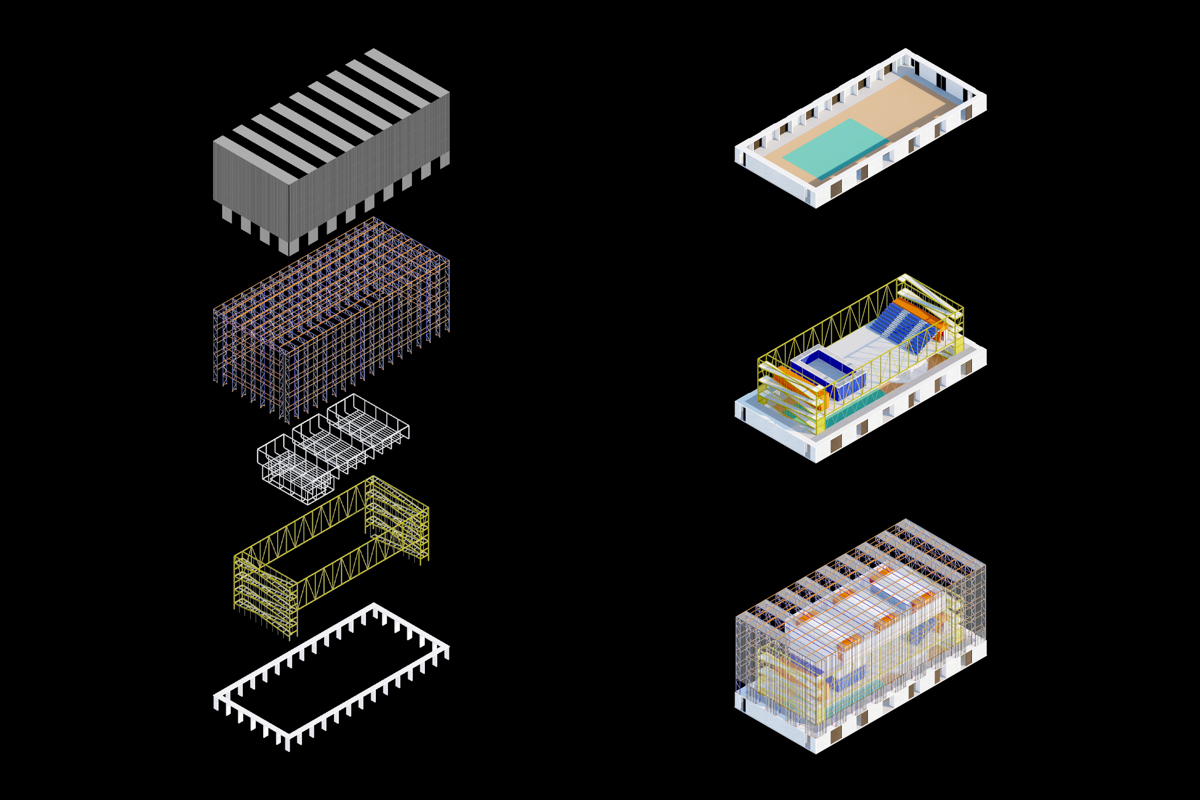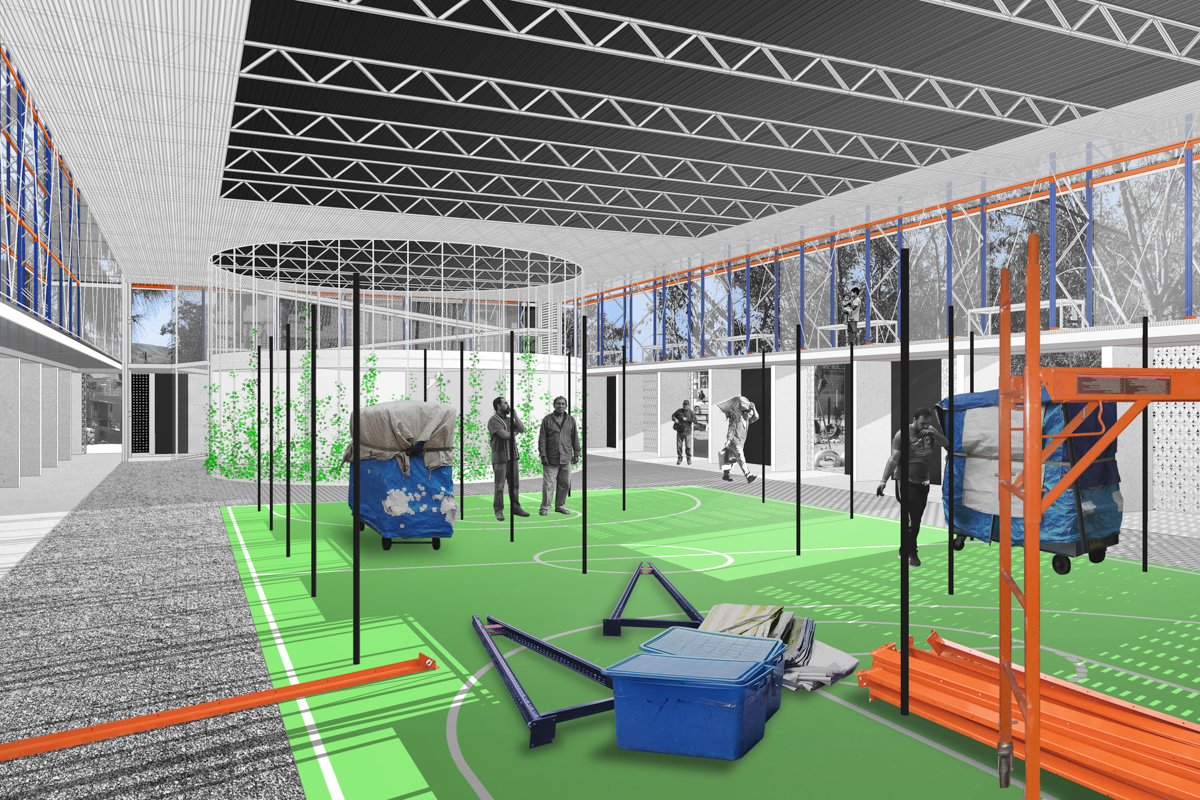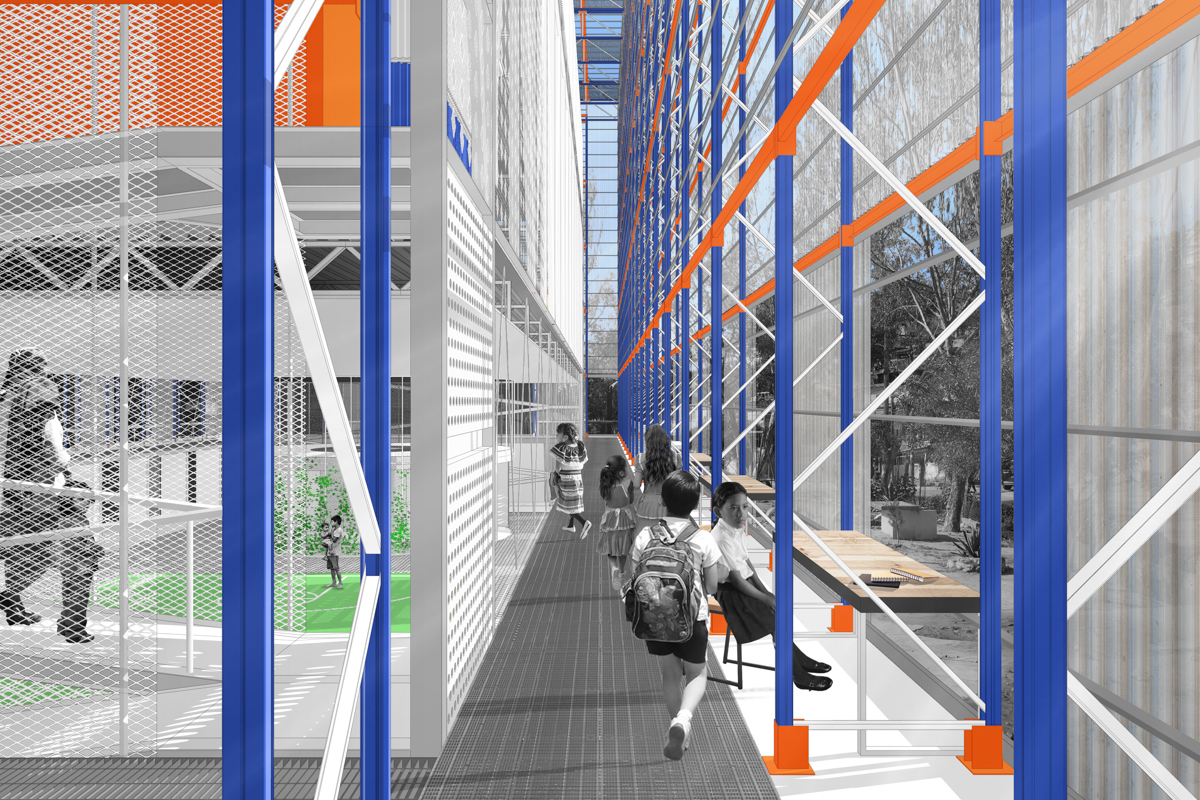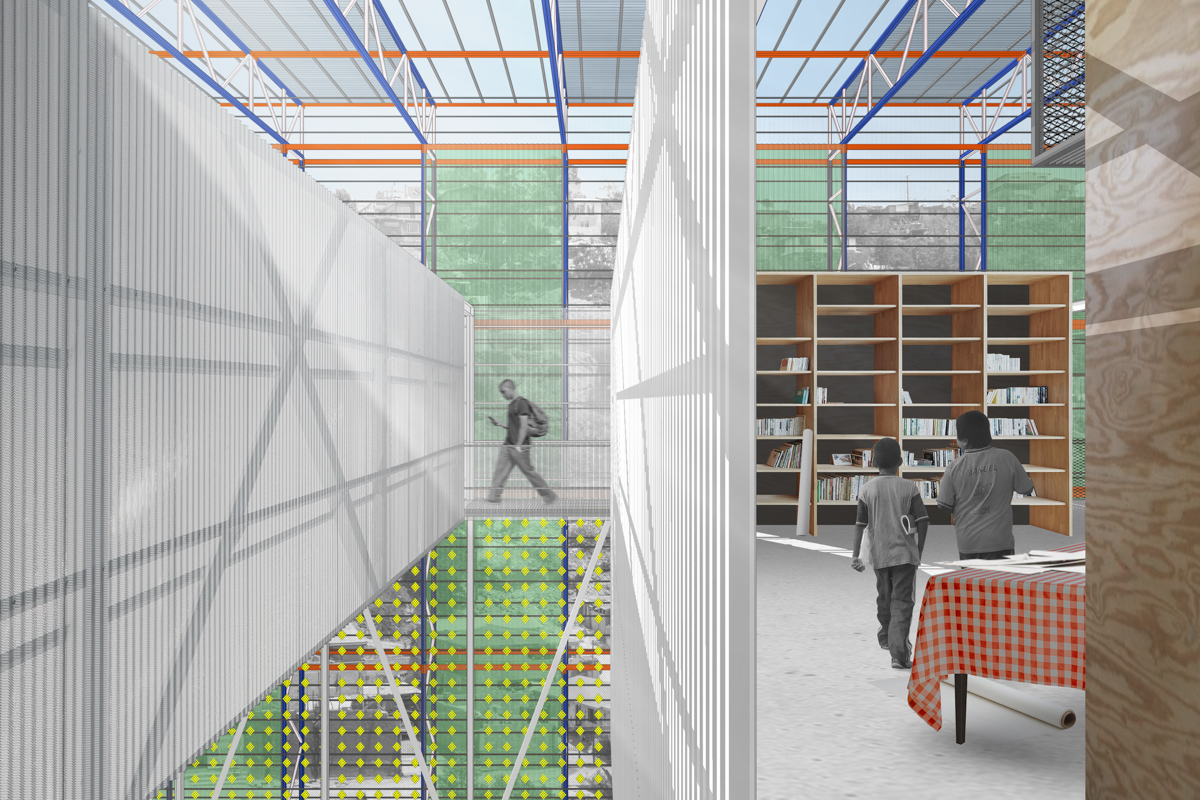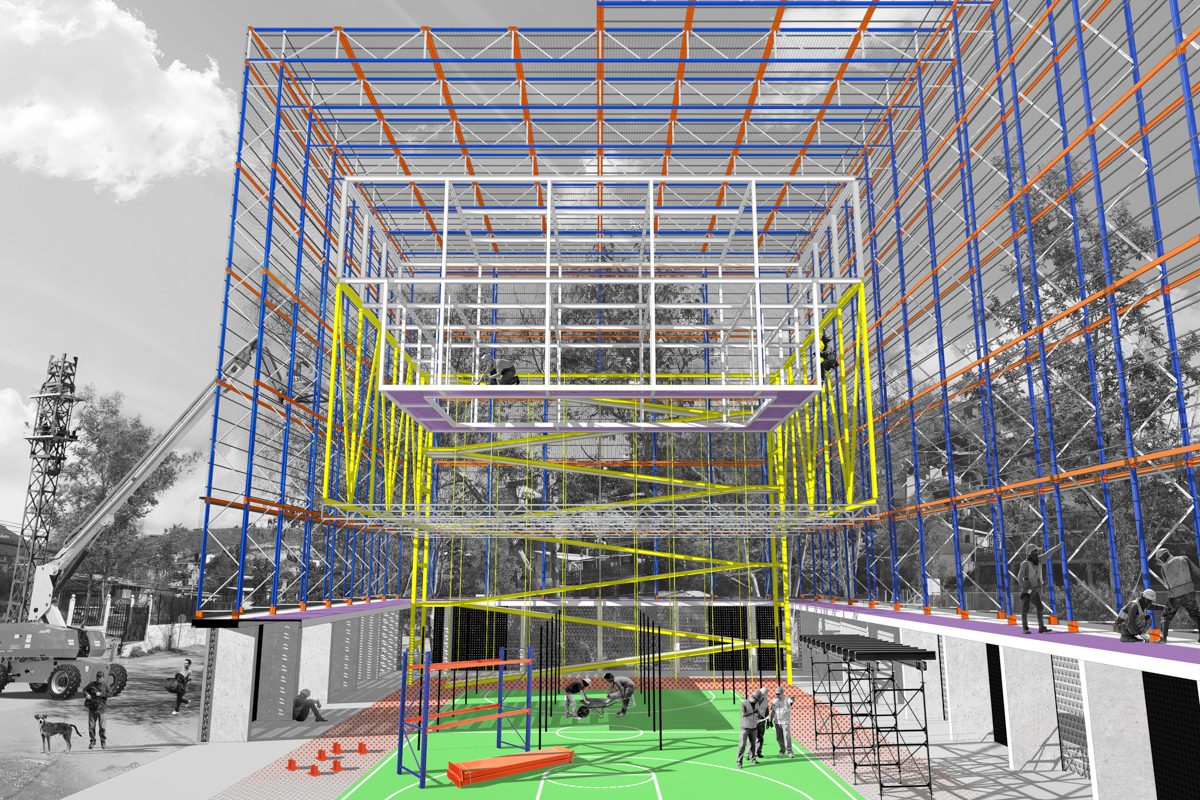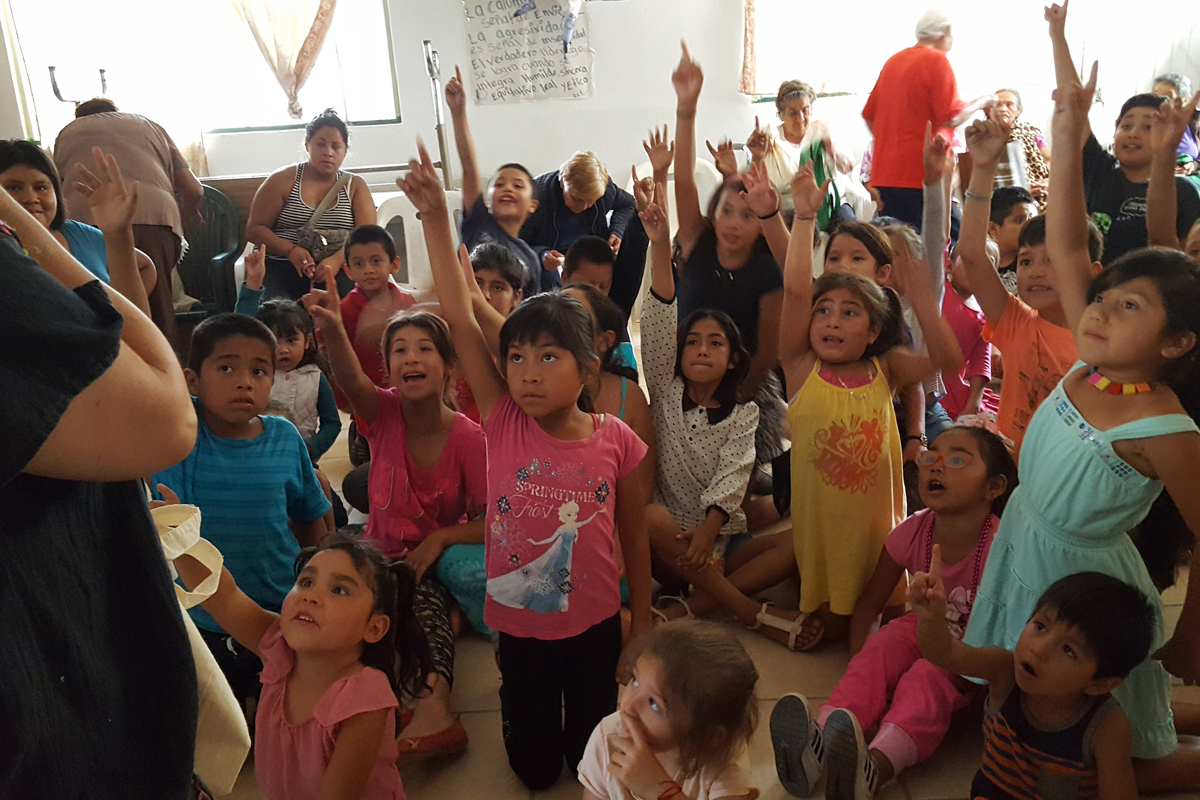A Multi-Use Civic Space That Evolves Incrementally
Located in the Divina Providencia neighborhood of Laureles Canyon, the UCSD–Divina Community Station currently operates in a community center building owned by our nonprofit partner Colonos de la Divina Providencia.
The UCSD–Divina Community Station, presently in development, is envisioned as a 24,000 sq ft flexible space that will evolve incrementally over time to accommodate economic incubator spaces, art and science fabrication labs, a health clinic, a technology lab, and a variety of spaces for informal markets, performance, sports, community events, and a small prepa (a high school, the first in the canyon). The structure itself performs as a pedagogical tool, through the environmental and social systems it contains. A 3D model was exhibited at the Cooper Hewitt Smithsonian National Design Museum as part of its 2016 exhibition, By the People.
The UCSD–Divina Community Station is a homage to the post-war French architect Jean Prouvé, renowned for his development of prefabricated social housing. In partnership with Bob Rubin and Stéphane Samuel, we are repurposing the actual remaining pieces of one of Prouvé’s three salvaged Maison Tropicale structures into our design for the station. The UCSD–Divina Community Station is essentially a public house for the residents of this Mexican border settlement, in the spirit of Prouvé’s Maison du Peuple.
